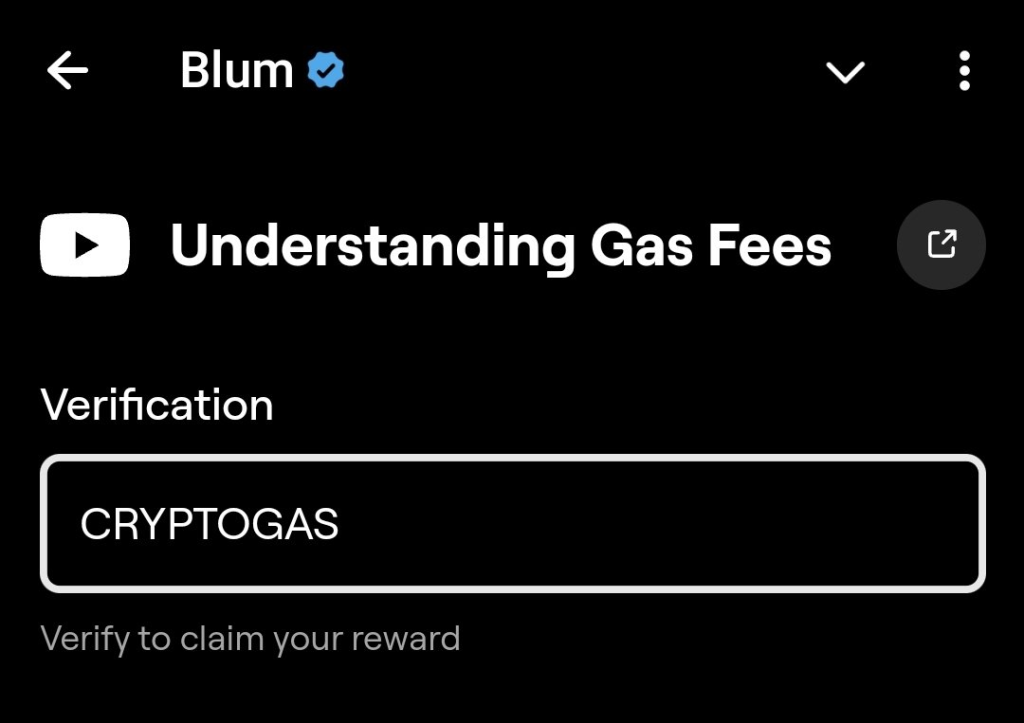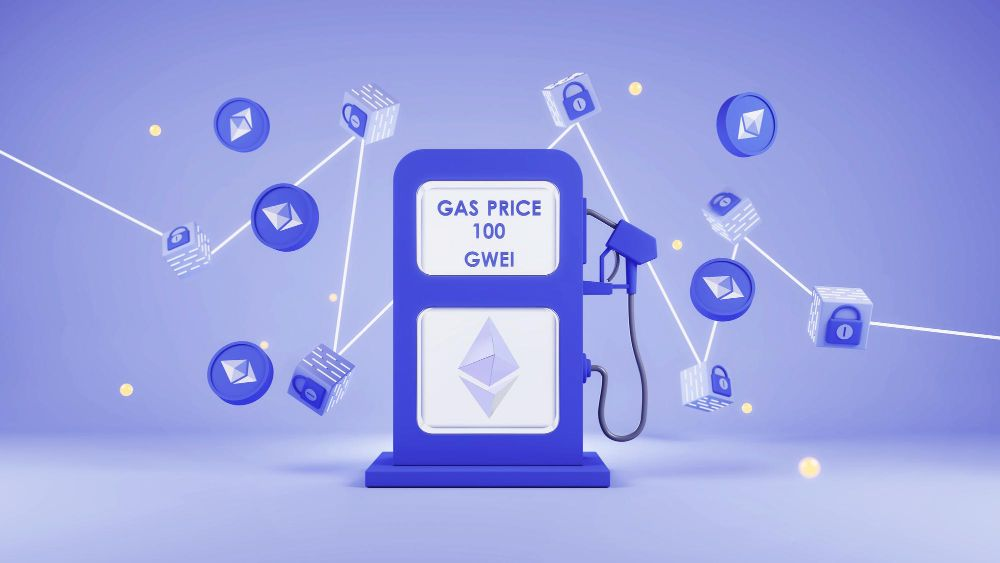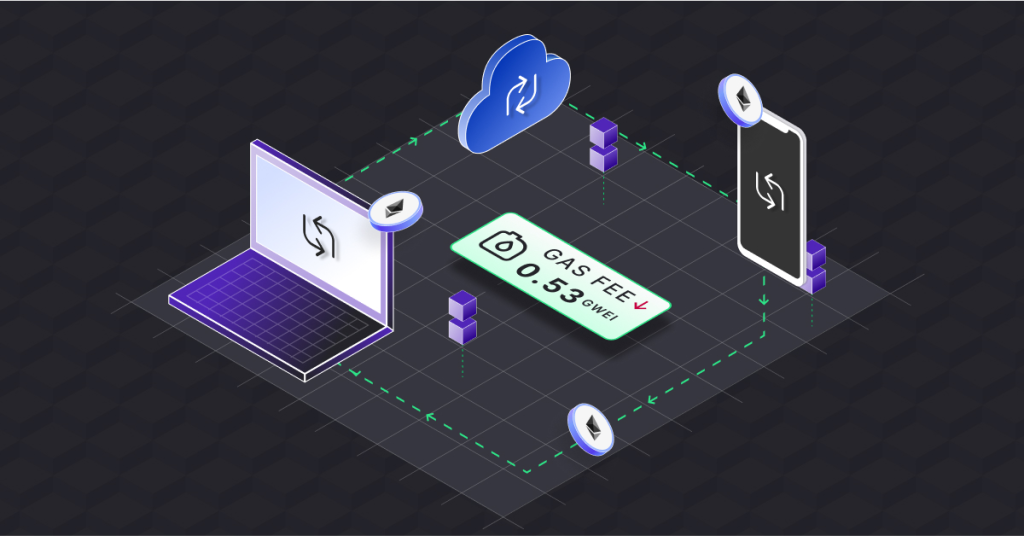TL;DR:
- Understanding Gas Fees Blum Code, Answer: CRYPTOGAS
- Crypto gas fees are mandatory payments for processing transactions on the Ethereum network
- As Ethereum shifts to proof-of-stake and incorporates Layer 2 solutions, these fees are likely to decrease, improving transaction affordability.
Transactions on the blockchain happen around the clock, unlike traditional banks which have set operating hours. However, much like banks, each transaction can incur a fee. On the Ethereum network, these fees are known as “gas fees”, while on other blockchains, they are typically referred to as “transaction fees.” The “Understanding Gas Fees” Blum video unveils the mystery behind these charges in the blockchain world. Now, WEEX is here to help you understand gas fees better and learn effective strategies for reducing crypto gas fees.
Contents
Understanding Gas Fees Blum Code November 12
Blum Academy released its latest video, “Understanding Gas Fees: What You Need to Know“ on November 11. Blum Understanding Gas Fess video mainly explains how to minimize gas fees and maximize your crypto transactions. It covers what gas fees are, why they exist, and how they’re calculated.
Understanding Gas Fees Blum Video Task:
Video: Understanding Gas Fees
Blum Code: BLUMIFY

Understanding Gas Fees
Gas fees refer to the cost that users pay to network validators whenever they perform an action on a blockchain, such as Ethereum. In simple terms, gas fees act as a “service fee” to compensate miners (on proof-of-work blockchains) or validators (on proof-of-stake blockchains) for processing and confirming transactions. These fees incentivize network participants to validate transactions accurately and maintain the integrity of the protocol.
While blockchains like Ethereum and Polygon use the term “gas fees”, other networks, such as Solana and Bitcoin, refer to them as “transaction fees.” The term “gas” draws a comparison to fuel, as it powers the process of executing transactions and maintaining the blockchain.
How Are Gas Fees Calculated?
Gas fees are determined by two key components: gas price and gas limit, both of which vary based on network demand and the complexity of the transaction.
- Gas Price:
Gas price refers to the amount you are willing to pay per unit of gas, typically measured in gwei (a subunit of Ethereum). The gas price is determined by the level of congestion on the network—higher demand leads to higher gas prices, as users compete to have their transactions processed faster. Gas prices fluctuate, and users can choose to pay a higher price to expedite their transaction or a lower price if they are willing to wait longer for processing.

- Gas Limit:
The gas limit is the maximum amount of gas you are willing to spend for a particular transaction. The gas limit depends on the complexity of the transaction. For instance, sending ETH from one wallet to another requires less gas than interacting with a decentralized application (DApp) or executing a smart contract, which involves more computational work.
Gas fees are calculated using the formula:
Gas Fee = Gas Price (gwei) × Gas Limit
The total gas fee is the product of the gas price and the gas limit. For example, if the gas price is 50 gwei and the gas limit is 21,000 units (for a basic ETH transfer), the total gas fee would be 50 gwei × 21,000 gas = 1,050,000 gwei (or 0.00105 ETH).
These fees can vary significantly depending on network congestion and the type of transaction, with more complex actions requiring higher fees. To minimize costs, users can monitor gas prices and choose optimal times for their transactions.
Why Do Gas Fees Exist?
Gas fees are a fundamental part of blockchain networks, serving as an incentive for miners (on proof-of-work blockchains) or validators (on proof-of-stake blockchains) to process transactions and maintain network security. Without these fees, there would be little motivation for these participants to confirm transactions or protect the integrity of the blockchain. Additionally, gas fees help prevent malicious actors from flooding the network with spam transactions, which could slow down the system and undermine its security. By imposing a cost, gas fees ensure that only legitimate transactions are made, keeping the network efficient.

Furthermore, gas fees play a key role in efficiently allocating network resources. Blockchains like Ethereum have limited capacity to process transactions at any given time, and gas fees help prioritize transactions, particularly during periods of congestion. Those offering higher gas fees are typically processed first, ensuring that more urgent or valuable transactions are handled promptly.
How to Reduce Gas Fees?
Although gas fees are unavoidable, there are several strategies you can use to minimize the costs:
- Time Your Transactions: Gas fees fluctuate throughout the day, with lower costs during periods of low network congestion. Transactions are often cheaper during off-peak hours, such as weekends or late at night. By timing your transactions wisely, you can save significantly on fees.
- Use Layer 2 Solutions: Layer 2 networks like Polygon, Optimism, and Arbitrum are designed to process transactions off the main Ethereum chain, significantly reducing gas costs. These platforms offer faster and cheaper transactions, making them ideal for cost-conscious users.
- Optimize Gas Settings: Many wallets and platforms allow you to adjust the gas price and limit. Some even offer options for automatic optimization to help you avoid overpaying. Monitoring real-time gas prices via tools like ETH Gas Station can help you time your transactions to minimize costs.
- Batch Transactions: Instead of executing multiple individual transactions, consider batching them into one. Some platforms allow users to combine several actions (like sending tokens or interacting with DApps) into a single transaction, which can lower the overall gas fees.
- Choose Alternative Blockchains: If Ethereum’s gas fees are too high, consider using more affordable blockchains like Binance Smart Chain (BSC), Solana, or Polygon. These networks offer lower transaction fees, and many DApps and DeFi platforms are compatible with them.
Understanding Gas Fees on WEEX
WEEX is gaining recognition as an excellent crypto exchange for beginners due to its user-friendly platform, security measures, and extensive educational resources. Whether you’re a beginner or a seasoned trader, WEEX offers a seamless trading experience with support for various cryptocurrencies, including BTC/USDT, ETH/USDT, DOGE/USDT, XRP/USDT, WXT/USDT SOL/USDT and other numerous altcoins. Beyond trading, WEEX is dedicated to educating its users, making it a trusted resource for those looking to stay informed in the fast-paced world of crypto.

Beyond trading, WEEX is committed to educating its users, positioning itself as a trusted resource for staying informed in the rapidly evolving world of crypto. We’ve explored various popular Tap-to-Earn crypto game codes and provided deeper insights into the concepts behind them.
Staying Informed: Blum Code Updates on WEEX
Node Sales in Crypto Blum Codes: A Beginner’s Guide to Node Sales
Crypto Slang Part 2 Blum Code: Key Crypto Slang You Need to Know
What’s Crypto DEX Blum Code: What is a Decentralized Exchange (DEX)?
DeFi Risks Key Insights Blum: Navigating the Benefits, Risks, and Challenges of DeFi
Find us on:
Sign up for a WEEX account now: https://www.weex.com/register
[Supported Platforms]:
